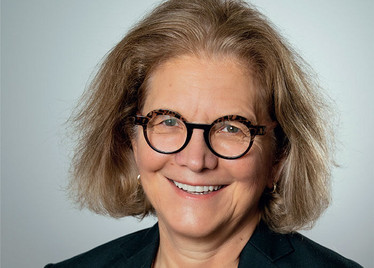A History of Missed Opportunity Leave a comment


Gary Shangold
Chief Medical Officer at Enteris Biopharma

Sabrina Martucci Johnson
President, Chief Executive Officer, and a member of the Board of Directors at Daré Bioscience

Stephanie Seremetis
Chief Medical Officer of Haemophilia at Novo Nordisk

Chris Porter
Director of the Monash Institute of Pharmaceutical Sciences (MIPS) at Monash University
For centuries, societies worldwide have been governed by patriarchal standards. Walls were built up and maintained to protect the rights and liberties of men, but not without cost. As societies change and as people actively choose to dismantle these longstanding biased frameworks, it is inevitable that some remnants of past inequality will take more time to address and, ultimately, erase – the impact on women’s health being just one.
“In dollars, only one percent of the approximated US$200 billion spent on healthcare research and development focuses on women’s health (1). As a result, half the population is left behind the health innovation curve,” says Sabrina Martucci Johnson, Chief Executive Officer at Daré Bioscience and women’s health advocate.
Even though the figure is shockingly low, what’s worse, she says, is the prevailing attitude that women’s health issues, whether life-threatening or not, are “simply a part of being assigned female at birth.” This attitude – and its roots in misogyny – undoubtedly impact the therapeutic options available to women. But could there be more to the issue than meets the eye?
Despite the thalidomide scandal (see Notes on a Scandal) occurring over 60 years ago, for decades, it set the tone for pharmaceutical R&D for women’s health concerns. The documented safety risks that the drug posed to infant lives as well as the mounting public concern at the time meant that the floor was open to governments and regulatory agencies to respond. But some of their reactions could only be described as heavy-handed.
“The thalidomide scandal is a stark reminder that evaluating not only the effectiveness but also the safety of drugs in women is critical, particularly in women of reproductive potential,” Johnson says. “This is certainly something that the FDA takes seriously when evaluating the risk/benefit potential of a particular drug.”
However, in 1977, the agency made a decision that would help shape the way pharma companies would view women’s medical issues for years to come. The agency published guidelines that prevented women of childbearing age from participating in clinical trials. Though well-intentioned, the decision affected attitudes on a broad scale (2).
“A mindset took hold in the industry that it would be easier to find out whether a medication was effective and safe if we didn’t have to assess it in the setting of a fluctuating hormonal milieu (and its potential effects on absorption, metabolism, and excretion of the drug), and to a subject who might potentially harbor an early, as-yet undetected pregnancy; thus, the attitude became ‘let’s just study it in men for now, and get to the women after approval,’” says Gary Shangold, Chief Medical Officer at Enteris Biopharma.
However, the seeming convenience of excluding women from trials left a gaping hole in the industry’s collective understanding of the ways medicines worked in women. “Women have a higher prevalence of autoimmune diseases and are more likely to use antidepressants. They also have significantly higher rates of arthritis, osteoporosis, diabetes, and hypertension than men. And the number one killer of women is still cardiovascular disease,” Shangold says. With this gender-based disparity in disease prevalence to contend with, regulators and other stakeholders began to make a change to existing guidance.
By 1985, a new mindset was starting to take hold. A report published by the Public Health Service Task Force on Women’s Health Issues challenged existing ideas on clinical trials and pushed industry stakeholders to consider how they could be made more inclusive (3).
In the years since, there has been a drastic change to the way clinical trials run – with more women represented than before – but the gender imbalance still remains. For Stephanie Seremetis, Chief Medical Officer of Haemophilia at Novo Nordisk, the exclusion of women – particularly those with the potential to birth children – hasn’t completely disappeared.
“It’s interesting yet horrifying that two-thirds of trials are still made up of men. With only a third represented by women, it’s no surprise that women of childbearing age are not included,” she says. “People have often theorized that women are afraid to participate but there is a clear history of exclusion.”
This exclusion, she goes on to explain, runs across racial and socio-economic groups affecting a variety of marginalized communities. Inappropriate access to trials coupled with a lack of understanding of the barriers to participation mean that women from a variety of backgrounds remain excluded.
The traditional approach to clinical trials, Shangold argues, is one of the major reasons that fewer women choose to participate. For example, the numerous investigational site visits associated with these trials make them unattractive. He says, “It’s one thing if a patient has a day job with site visits. However, add to that the responsibilities that have been traditionally owned by women in a family unit – for example, childcare and the provision of food – and the added burden of attending regular study visits can easily become too much of a time and energy challenge for a woman, whose alternative to participating in a clinical research study might otherwise be to simply take a known and safe, physician-prescribed medicine.”
Another challenge? The frequent use of placebo controls in late-stage clinical trials. “There is a 25–30 percent chance of being assigned to a group destined to be treated with a non-effective control,” says Shangold. “Though I am a proponent of the value of placebo-controlled designs in many settings, it still creates an additional challenge to recruitment.”
Pharma often purports that it aims to become more patient-centric and inclusive. But with many still left out of the equation when it comes to R&D, the industry will have to ask how it can move away from traditional trials and encourage more women to participate.
On December 25 1956, the first thalidomide baby was born – the first among many. In the following years, babies were born with physical disfigurements as well as damage to the brain, eyes, and skeletal structure in over 40 countries worldwide. The cause? A drug marketed as a morning sickness treatment. Although thalidomide was able to help mothers in some respects, the drug also degraded SALL4 – a protein that allows for normal fetal growth.
It wasn’t until 1961, that the link between the drug and the side effects was made. In that time it is estimated that approximately 100,000 pregnancies were affected with many succumbing to the drug’s effects.
Legal action was launched against the company that marketed the drug, Chemie Grünenthal, and litigation began in 1968. The company reached a settlement agreement with the victims in 1970.
Today there are roughly 3000 survivors.
To read more about the Thalidomide Scandal visit The Thalidomide Trust
By offering patients the opportunity to participate in trials without a significant loss of time and resources, decentralized trials are growing in popularity. As the name suggests, decentralized trials are not confined to specific sites and take place on digital platforms. Any patient with access can, therefore, take part.
“Anything we can do as an industry to make clinical trial participation easier can enhance engagement in the drug development process – minimizing visits, using virtual visits, and electronic diaries are all part of the solution,” says Johnson.
But decentralized trials aren’t new. They have been around in various forms for years. It was the COVID-19 pandemic that pushed companies to further consider their benefits. Without the ability to connect face-to-face, companies had to employ digital and decentralized options to ensure the smooth running of existing trials as well as those launched during the crisis. For Seremetis, who aimed to continue her work on clinical trials in blood disorders at Novo Nordisk during the pandemic, the move to decentralization was an unexpected but necessary step in the right direction.
Frank and honest conversations between minority patients and their existing (hopefully trusted) caregivers are necessary,
Commenting on the switch to a digitalized trial approach, she says, “COVID-19 came with terrible consequences. But on a positive note, we learned that we can conduct trials remotely. It quickly became important for us to figure out how to conduct virtual conversations with patients and carry out virtual exams.”
Virtual blood work wasn’t a possibility, but the use of digital tools enabled the company to assess whether site visits could be minimized or locations altered to reduce travel. “Regulators also had a big part to play during his time,” she says. “Though initially skeptical, they began to accept some of the new approaches that we adopted for recruiting and retaining patients.” This, according to Seremetis, helped keep women engaged with trials.
But even with this positive change happening in real-time, Shangold still questions whether women of all backgrounds are aware of how they can contribute to pharmaceutical innovation. “When we expand the discussion to consider the added challenge of attracting women who are also members of other ethnic/racial minorities, we are confronted with the fact that there is frequently both a lack of awareness of clinical research study opportunities, along with much deeply-ingrained distrust of the medical/scientific community, following an admittedly-checkered past that included some infamous transgressions,” he says.
From the Tuskegee syphilis trials (4) to the development of HeLa cells without the consent of the black patient who they were initially derived from (5), many communities of color have become distrustful of pharmaceutical and healthcare institutions. Overcoming this, he continues, will require continuous community outreach. “Frank and honest conversations between minority patients and their existing (hopefully trusted) caregivers are necessary,” says Shangold. “Local physicians have to be involved in recruiting subjects for clinical studies, and only through consistent respect for the rights of all research participants can we, as a discipline, hope to win back the trust of these many long-disenfranchised groups.”
But even if the industry is able to invest the time and effort required to mend these relationships and further employ decentralized trial platforms, there are still challenges yet to be addressed in other corners of the pharmaceutical ecosystem. The knowledge gap isn’t limited to trials, and, as the industry looks ahead, it will have to expand its understanding of conditions and illnesses that exclusively and/or disproportionately affect female populations as well as the barriers that prevent innovation in the drug development process.
 Image Credit: Klaus Nielsen / pexels.com Sandy Torchon / pexels.com
Image Credit: Klaus Nielsen / pexels.com Sandy Torchon / pexels.com
According to Shangold, funding plays a major role in the development of new therapeutics for women. Because of the complexities of the diseases that exclusively affect women – particularly gynecological or reproductive disorders, venture capitalists have become reluctant to pour investment into the companies interested in pursuing these areas of need.
“About 30 years ago, there were a handful of companies that dominated the landscape for hormone therapies – estrogens and progestins designed primarily to provide contraceptive protection or replace the natural ovarian hormones that ceased to be produced after menopause,” he says. “But in 2002, when data from a large longitudinal study, the Women’s Health Initiative, emerged, ideas about the safety and effectiveness of some of these drugs were upended.”
Data from the study showed that some women were at an increased risk of breast cancer, stroke, and blood clots as a result of taking hormone-based medicines. The landmark results pushed physicians to reduce the rate at which these drugs were prescribed with knock-on consequences for companies’ investment prospects.
Over time, some of this data was shown to be incorrect, but the damage was done. Says Shangold, “Corresponding with the change [in attitude towards hormone therapies], the availability of venture capital to fund early-stage R&D in Women’s Health at smaller pharma and biotech companies withered as the likelihood of big pharma partnership became much less likely for some time.”
Though the tide has certainly changed, the attitude that existed decades ago still has a foothold in the pharmaceutical landscape, with some companies still weary about the potential risk. However, others are actively working to make a difference. Seremetis cites the industry’s attitude toward hemophilia as an example. “Two of the most prominent bleeding disorders, hemophilia A and hemophilia B, are known to be sex-linked and are generally thought of as diseases that affect men,” she says. “But there are many women who are carriers of these genes who are symptomatic. Increasingly, we’re thinking about them as women with hemophilia, not women carriers. This change in mindset helps us better cater to potential users of our drugs.”
And although working in an entirely different area, Chris Porter, Director of the Monash Institute of Pharmaceutical Sciences (MIPS) at Monash University, Melbourne, expresses similar thoughts. Along with colleagues at US-based PureTech (Nasdaq:PRTC, LSE:PRTC), he is working on developing an oral formulation of a natural neurosteroid that has been shown to treat epilepsy, depression and a range of other neurological indications, but is currently only available as an infusion. One potential application of this medicine is in postpartum depression (PPD). Even though as many as 1 in 7 women worldwide are affected by PPD (6), treatment options remain scant. Porter says, “The only FDA-approved treatment for the disease, brexanolone (a formulation of allopregnanolone), relies on a 60-hour intravenous infusion – an obvious inconvenience to the lives of many patients. Other than this, general medicines for depression are prescribed – failing to address the distinct characteristics of the condition.”
Porter and his PureTech collaborators are now developing a prodrug strategy that will enable the oral administration of allopregnanolone since the prodrug redirects the absorption process away from ‘first pass’ breakdown in the liver. PureTech recently announced preliminary data from a Phase 1 clinical trial showing that this approach was able to provide oral exposure at levels approximately 9-fold higher than previous efforts to develop oral allopregnanolone. PureTech’s investigational candidate is also designed to enable rapid onset of action, which would be a marked improvement over conventional depression treatments that can take weeks to have an effect. But further study is needed before any potential drugs reach patients.
These companies – and others focused on various indications – are all working to close the therapeutic gender gap. But it’s clear there is still much work to be done. Aside from doing what’s right – what value can businesses expect in return as they continue to make progress?
A great deal argues Johnson. “Women are half the population and there are a number of conditions that they may experience and that require care as they mature through life. Thus, not only is women’s health a therapeutic sector where innovation and fairly priced therapeutic interventions can do social good, but it’s also a compelling value proposition.”
After finishing my degree, I envisioned a career in science communications. However, life took an unexpected turn and I ended up teaching abroad. Though the experience was amazing and I learned a great deal from it, I jumped at the opportunity to work for Texere. I’m excited to see where this new journey takes me!


